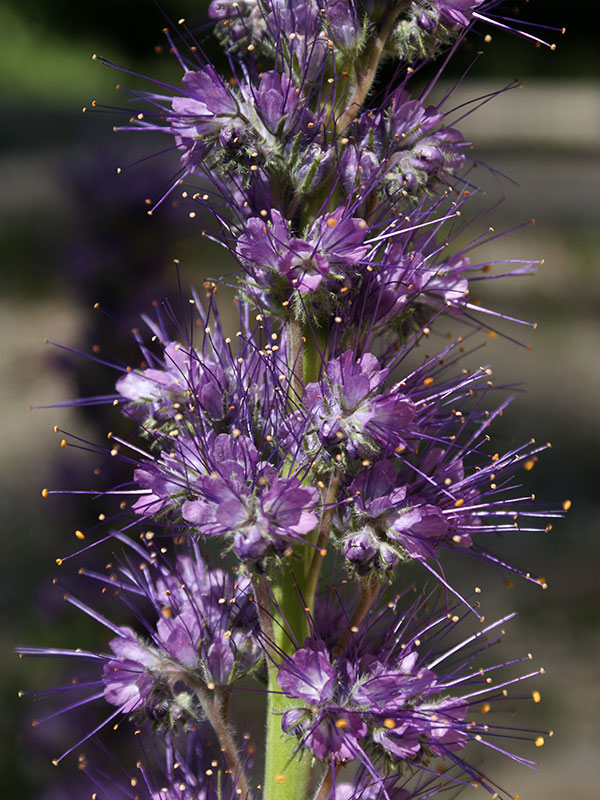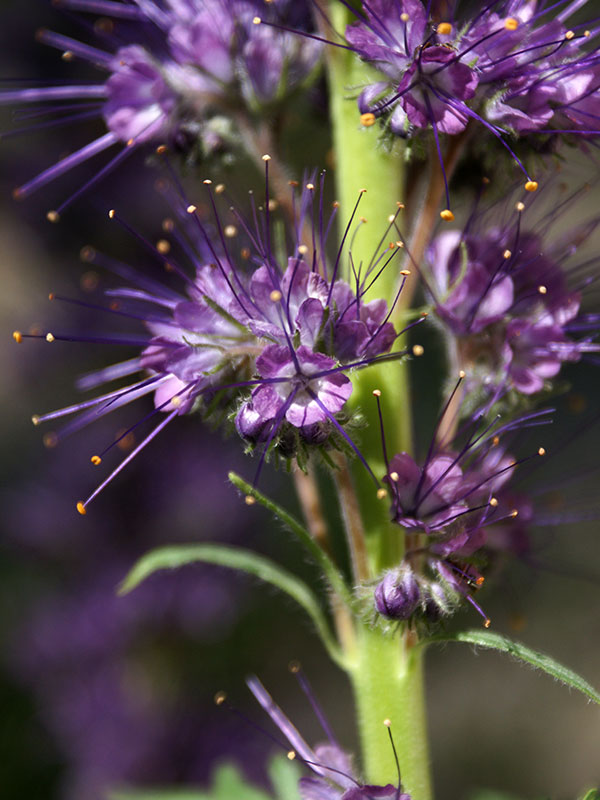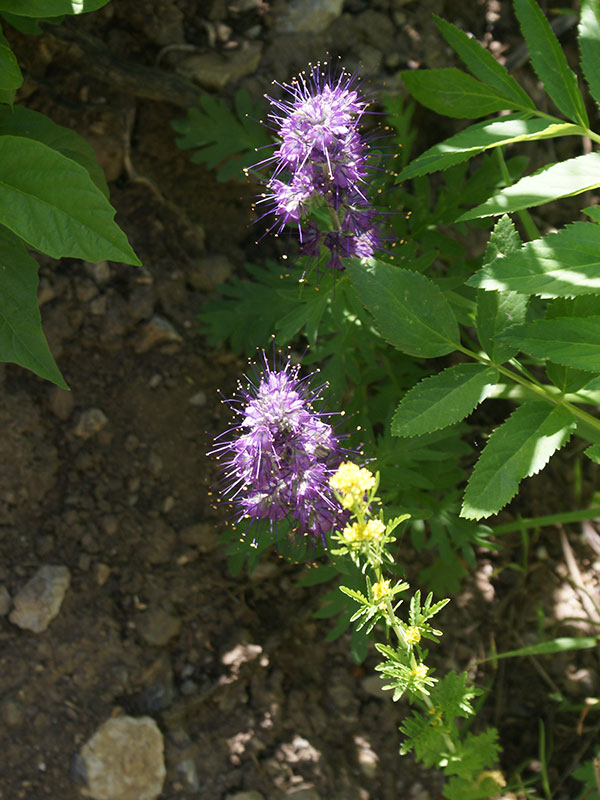Phacelia sericea / silky phacelia
- deep purple flowers with really long stamens and orange anthers
- many flowers arranged in a tight coil up to 2 feet long
- silky, divided (fern-like) leaves
- exposed, higher altitude, rocky places; often with sagebrush
Also known as: blue alpine phacelia, purple fringe, silky scorpionweed
See also: Phacelia heterophylla / varied-leaf phacelia
The silky phacelia is a truly spectacular alpine wildflower, blooming in early to mid summer. The flower buds begin to show just after the leaves begin expanding. Although field guides say to find it on the shores of alpine lakes, and it’s considered uncommon, the photos in the gallery here were taken just at the Mail Cabin trailhead parking lot.
What you will really notice as you approach this plant, indeed the reason that you will approach it, are the tightly coiled, helicoid (i.e. spiral) cymes of dark blue or purple flowers. These inflorescences are apparently confusing enough that they are sometimes called short panicles, or “tight cylinders”, or sometimes “short clusters or fascicles” (Phacelia being Latin for that), or looking like a bottle brush, or – while the inflorescence is still opening – coiled, like the tail of a scorpion.
Individual, bell-shaped flowers of the silky phacelia have five rounded lobes joined in a bell shape. Basically, they are deeply purple with lighter bases. And teeny… about a quarter of an inch across. They have very long purple stamens topped by bright yellow/orange anthers. The cool visual effect of these is to give the whole florescence sort of a fuzzy appearance. I suppose corrective lenses might help who ever said that. Regardless of how you wish to describe the inflorescence, an important point is that the flowers are hairy but not glandular, i.e. not sticky.
If you can pull your eyes away from the flowers, you’ll see the silvery-pubescent, fern-like leaves. phacelia means silky, hence the Latin name of the plant. Most of the leaves grow form the base of the plant, dividing once or twice into small, rounded lobes.
Phacelia sericea differs from most species in the genus by being a long-lived perennial growing from a tap-rooted, branched, woody base (caudex). Most of the 200-ish species in the genus are either annual or biennial.
Interesting bits – There are several plants on this site characterized as hyperaccumulators, i.e. they take up heavy metals from the soil. In the case of Phacelia sericea, the metal they accumulate is GOLD. Don’t get too excited, however, and run out and harvest all the plants you can find. In order to get one ounce of gold, you’d need to harvest and extract about 3 million pounds of leaves. Interestingly, Sedum lanceolatum also accumulates gold but at even lower concentrations.
Silky phacelia is also strongly cyanogenic, meaning that it synthesizes cyanide, attaches it to a sugar (making a glycoside), and stores it in the leaves, stems and roots. Like Phacelia, Sedum is also cyanogenic. Cyanogenic plants typically release some cyanide from their roots. Extracting gold with cyanide is a common mining method, and probably explains how this plant works. Cyanogenesis is a type of defensive mechanism, protecting plants from predators. It kills them the same way it kills you, and on soils devoid of gold, the cyanogenic glycosides do a good job themselves.
Finally, this is a really under-explored genus. New species of Phacelia have been described regularly, with six being named just since 2007.
| Color | |
|---|---|
| Family | |
| Blossom size | |
| Inflorescence size | |
| Inflorescence type | |
| When? | |
| Where? |



